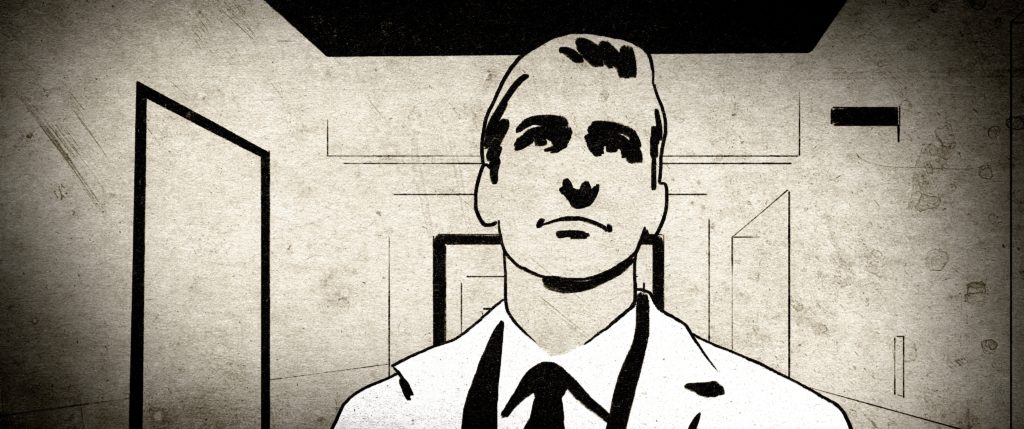The origins and modern reemergence of the process of deep brain stimulation is examined in Hunting for Hedonia. In the 1950s, Dr. Robert Galbraith Heath performed experiments in neuromodulation, trying to seek out the source of pleasure in the brain, also known as hedonia. However, Heath's methods were shunned by the medical community and he was effectively written out of history. However, today neurologists have rediscovered Robert Heath's method of deep brain stimulation, as a treatment for disorders such as Parkinson's and depression.
In Hunting for Hedonia, filmmaker Pernille Rose Grønkjær uses a combination of archival footage and animation to tell the forgotten story of Dr. Robert Heath and ties it in to the modern process of deep brain stimulation, which involves a stimulation being placed inside the brain of a patient. This includes a number of case studies, including Michael Riley, who suffers from Parkinson's, and Christina, who has depression, both of whom display noticeable signs of improvement from DBS treatment.

It is probably not too far fetched that Dr. Robert Heath was labeled as a mad scientist for both his early experiments in brain stimulation and his later participation in the MKULTRA program. Indeed, there are some very real concerns about using electrodes to change the personality of a person. This results in Hunting for Hedonia being a very interesting look at a highly controversial, yet possibly quite beneficial neuromodulation process.





